In the circuit diagram given alongside, find:
(i) total resistance of the circuit,
(ii) total current flowing in the circuit, and
(iii) the potential difference across R1
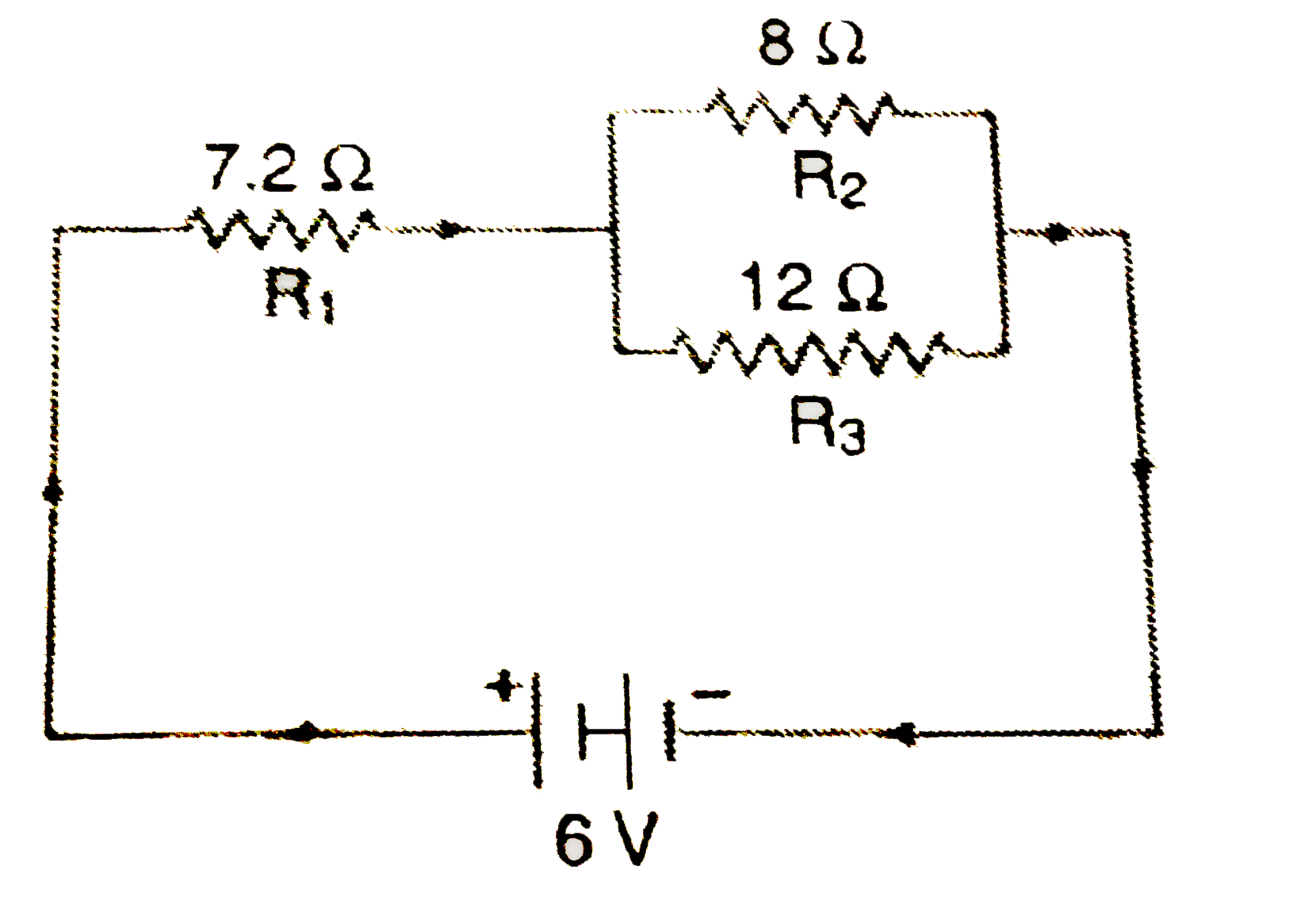
In this problem the resistances are connected in series as well as in parallel combination. For example, the two resistances R2 and R3 are in parallel combination to each other but, taken together, they are in series combination with the resistance R1.
(i) Calculation of Total Resistance. We will now find out the total resistance of the circuit. For doing this, let us first calculate the resultant resistance R of R2 and R3 which are connected in parallel.
Now, 1R=1R2+1R3
Here, R2=8Ω
and, R3=12Ω
So, 1R=18+112
or 1R=3+224
1R=245
and R=4.8 ohms
Thus. the two resistance of 8 ohms and 12 ohms connected in parallel are equal to a single resistance of 4.8 ohms. It is obvious that in the abive given diagram, we can replace the two resistance R2 and R3 by a single resistance of 4.8 ohms. We can draw another circuit diagram for this problem by showing a single resistance of 4.8 ohms in place of two parallel resistances. Such a circuit diagram is given alonside.
It is clear from this diagram that now we have two resistances of 7.2 ohms and 4.8 ohms which are connected in series. So,
Total resistance =7.2+4.8
= 12 ohms

Thus, the total resistance of the circuit is 12 ohms.
(ii) Calculation of Total Current. The battery shown in the given circuit is of 6 volys. So
Total potential difference, V=6 volts
Total current, I=? (To be calculated)
and Total resistance, R=12 ohms (Calculated above)
So, applying Ohm's law to the whole circuit, we get:
VI=R
or 6I=12
or 12I=6
or I=612
I=12
So, Total current, I=0.5 ampere (or 0.5A)
Thus, the total current flowing in the circuit is 0.5 ampere. It should be noted that the same current flows through all the parts of a series circuit. So, the current flowing through the resistance R1 is also 0.5 ampere.
(iii) Calculation of Potential Difference Across R1. We have now to find out the potential difference across the resistance R1 of 7.2 ohms.
Now, Potential difference across R1=? (To be calculated)
Current through R1=0.5 ampere
And, Resistance of R1=7.2 ohms
Applying Ohm's law to the resistance R1 only, we get:
VI=R
or V0.5=7.2
or V=7.2×0.5
opr V=2.6 volts
Thus, the potential difference across the ends of the resistances R1 is 3.6 volts.
Topper's Solved these Questions
- ELECTRICITY BOOK - LAKHMIR SINGH & MANJIT KAURCHAPTER - ELECTRICITY EXERCISE - Sample Problem
1 Videos
- ELECTRICITY BOOK - LAKHMIR SINGH & MANJIT KAURCHAPTER - ELECTRICITY EXERCISE - Exercise
311 Videos
- MAGNETIC EFFECT OF ELECTRIC CURRENT BOOK - LAKHMIR SINGH & MANJIT KAURCHAPTER - MAGNETIC EFFECT OF ELECTRIC CURRENT EXERCISE - NCERT BOOK
2 Videos
Similar Questions
(a) what is meant by series and parallel combination of resistances ?
(b) in which case, series combination or parallel combination, the combined resistance is less than any of the individual resistances ?
(c ) How should two resistance of 2Ω each be connected so as to produce an equivalent resistance of 1Ω ?
In the circuit diagram given here , find:
(i) total resistance of the circuit
(ii) total current flowing in the circuit, and
(iii) the potential difference across R1
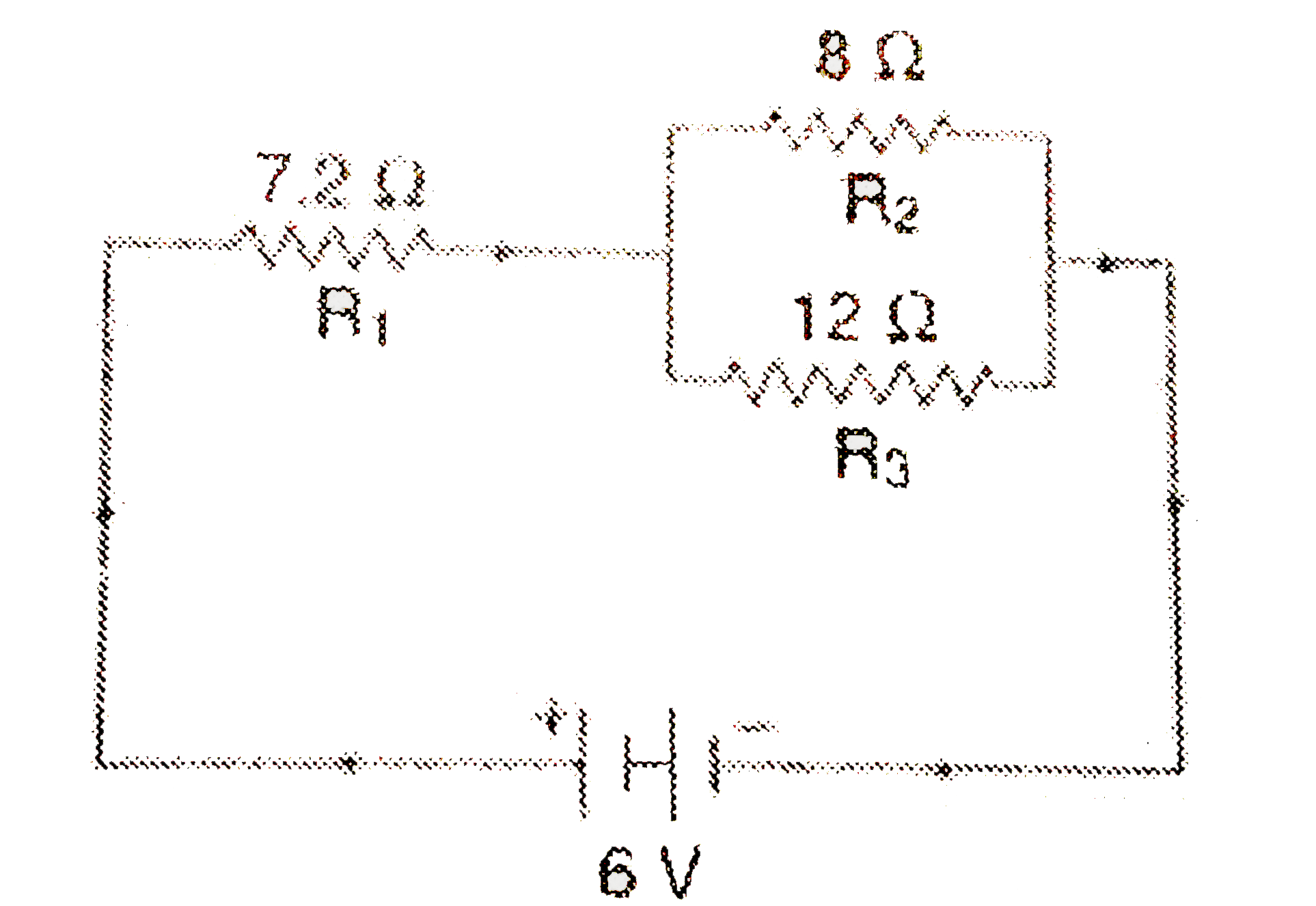
View SolutionThe circuit diagram given below shows the combination of three resistors R1,R2 and R3:
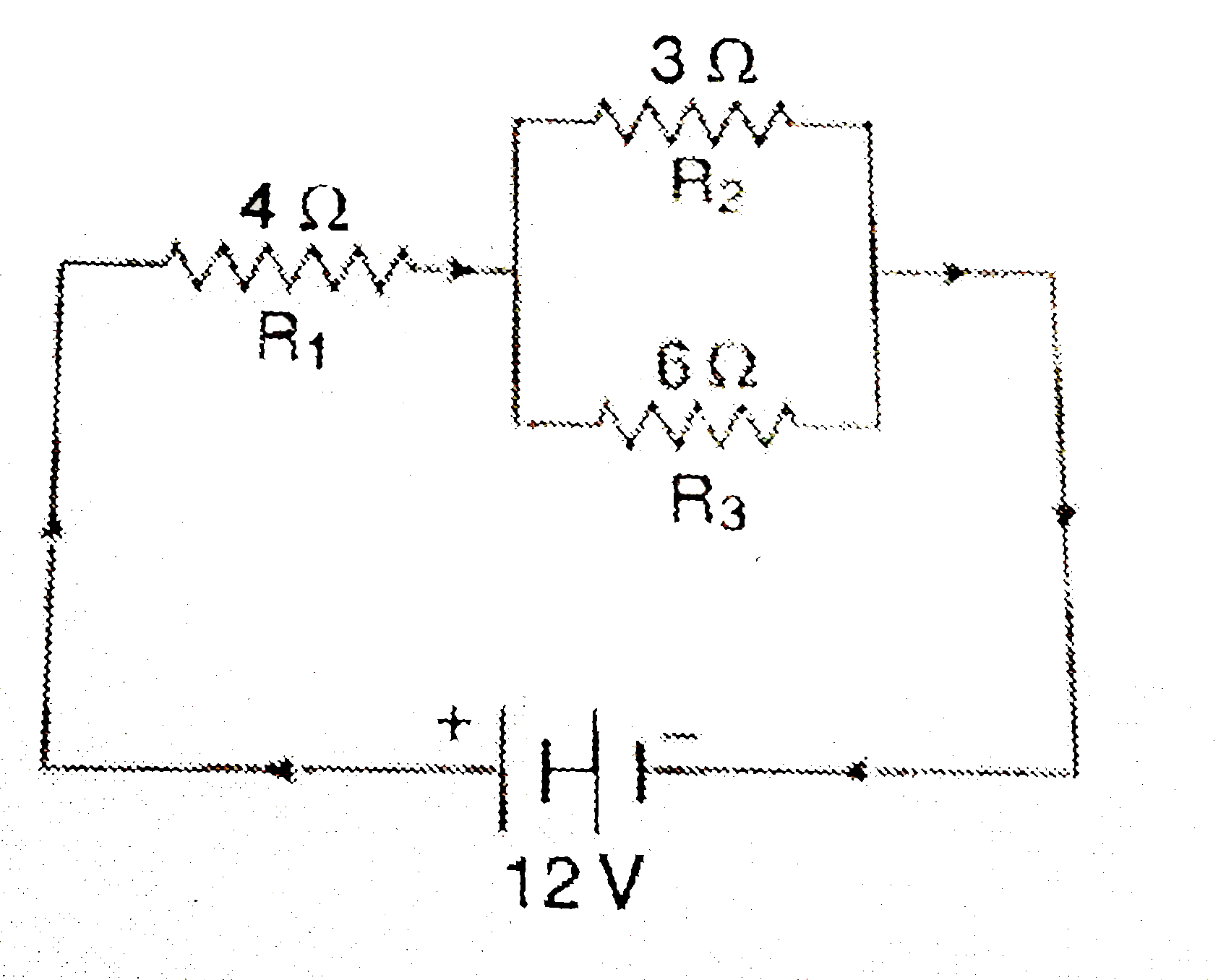
Find: (i) total resistance of the circuit.
(ii) total current flowing in the circuit.
(iii) the potential difference across R1.
View Solution
Knowledge Check
Total current flowing through the circuit:
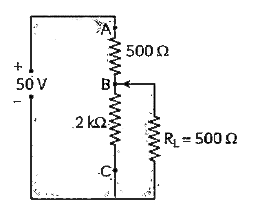 A0.677 AB0.057 AC0.87 AD2.87 A
A0.677 AB0.057 AC0.87 AD2.87 AFor given LCR circuit, total current is-
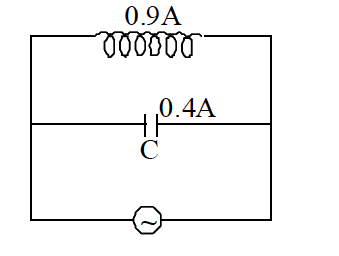 A0.5 AB0.13 AC√(0.9)2+(0.4)2DZero
A0.5 AB0.13 AC√(0.9)2+(0.4)2DZero
In the given circuit, calculate -

(a) the total resistance of the circuit,
(b) the current through the circuit, and
(c) the potential differences across R1andR2
View SolutionFind the potential differnce across R2 in the circuit
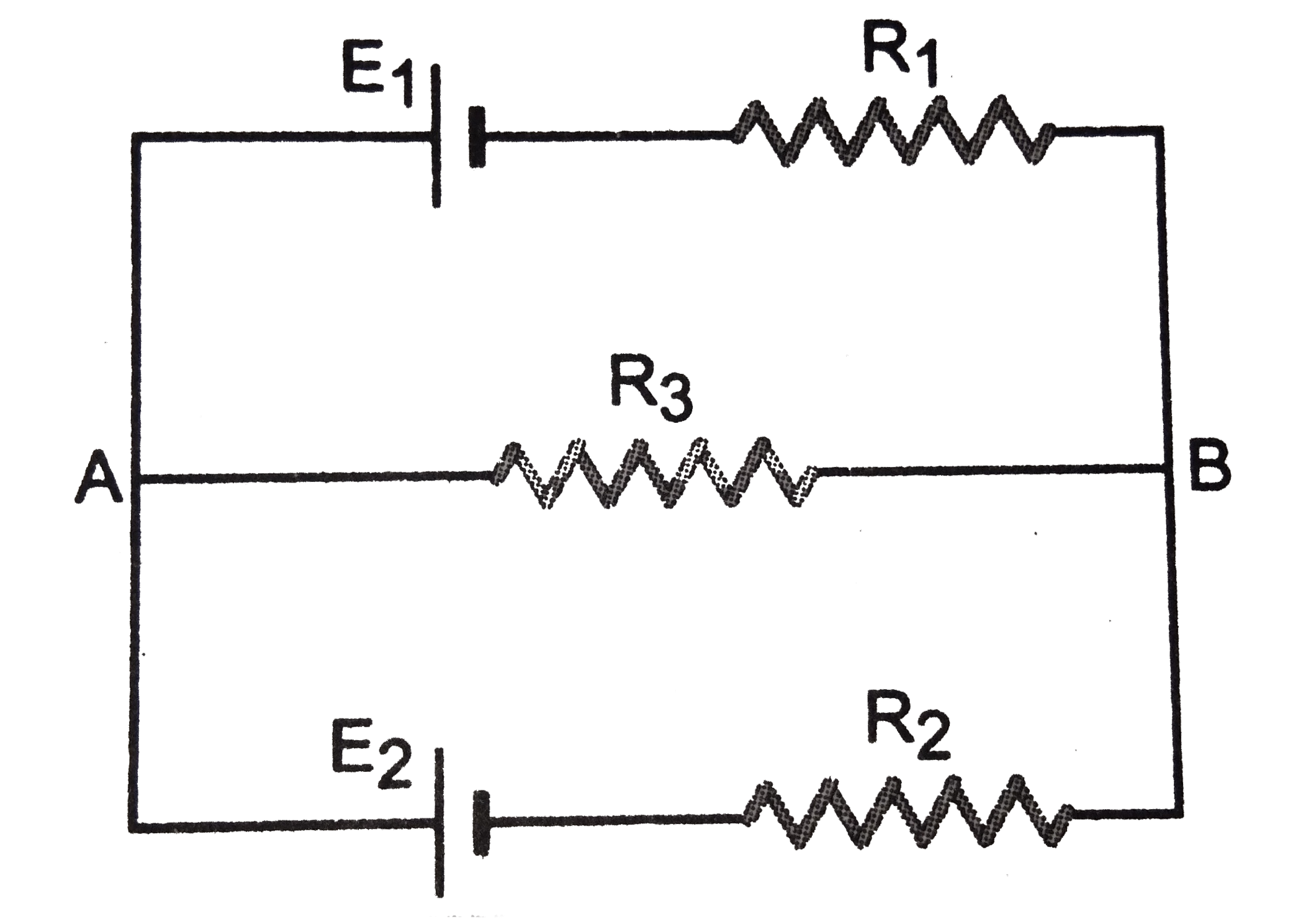
View SolutionA resistor of 4 ohm resistance and an electric lamp of 20 ohm resistance are connected in series across a 6 volt battery. Draw a lebelled circuit diagram by using the symbols for ohm and volt. Calculate:
(a) total resistance of the circuit.
(b) current flowing through the circuit.
(c) potential difference across the resistor.
(d) potential difference across the electric lamp.
View SolutionStudy the electric circuit of Fig. 12.30 and find (i) the current flowing in the circuit and (ii) the potential difference across 10Ω resistor.
View SolutionIn the given circuit find potential difference across 10ohm resistance
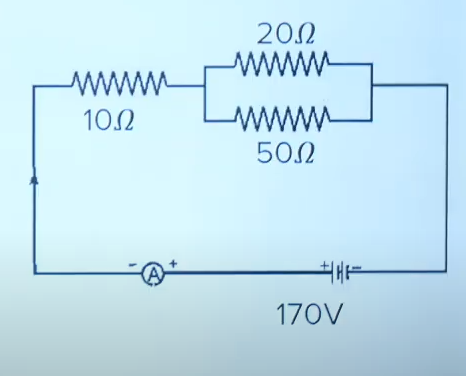
View SolutionIn the circuit shown in Fig. calculate
(i) current in the circuit
(ii) Potential difference across each element.

View Solution
